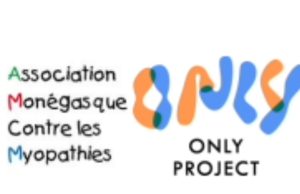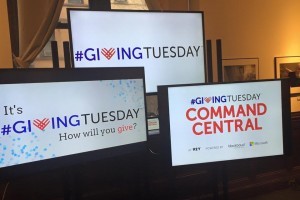The finishing touches on the resource guide of Bicycle Indiana were completed despite the three main parties being in different parts of the country during the final week of the project.
The publication, which includes the annual report and resources for members regarding rides, retailers and clubs, was created with the help of a volunteer graphic designer in northern Indiana. Meanwhile, Program Manager Jess Hall happened to be in Florida that week while the organization’s executive director was at headquarters in the Indianapolis, Ind.
“There are certain times where it’d be great to be able to walk down the hall to the designer’s office, look at the layout spread on a table together,” Hall said, but it’s no deal-breaker. The guide was completed via email and conference calls.
With everything including some kitchen sinks connected wirelessly to the Internet these days, the web has made virtually everything, well, virtual. It’s not just employee telecommuting that is made easier and more widespread by using the web. Nonprofits are using the help of volunteers without seeing them on a daily or even weekly basis.
There are many myths when it comes to “virtual volunteers,” according to Jayne Cravens. Namely, that they’re not real. That’s why she prefers to refer to them as online volunteers, or volunteers who do things online. Cravens recently co-authored a book “The Last Virtual Volunteering Guidebook: Fully Integrating Online Service into Volunteer Involvement.”
Some of the best examples of online volunteers are at organizations that don’t call the people they’re working with volunteers. “They call them our team, our contributors. They really see them as an integral part of the organization,” she said.
“When a nonprofit has problems embracing the idea of virtual volunteering, you can always trace back to how that organization views volunteers – that they’re not very well integrated into program,” Cravens said. “Rather than community investment, these people carry our program farther, look for more ways to involve them, create assignments for them. Organizations that really see volunteers in a very limited way are the ones that have trouble with the concept of virtual volunteering,” she said.
The 22-year-old Bicycle Indiana advocates for bicycle legislation and infrastructure and provides education programs. Indiana is about a six-hour drive from north to south and a dozen board members are spread throughout the state, Hall said. While they meet in person quarterly and have a conference call monthly, committees communicate as needed. “We’re trying to determine a better way to make those calls a little more engaging and personable,” she said, whether through Skype or Google Hangout.
Cravens calls it a digital divide of sorts, between nonprofits that would never think that online volunteers aren’t real, or don’t take real time and commitment. “They don’t need convincing,” she said. “They get it. They see it as a resource, as an opportunity. Others see this as a burden, a liability, even as a negative,” she said.
“There doesn’t seem to be an in between,” Cravens said, adding that nonprofits often do it but don’t realize they’re engaging online.
Those who track volunteering don’t seem to realize it either. According to the federal U.S. Bureau of Labor Statistics (BLS), volunteering is at a 10-year low, with the rate of volunteering dropping to 25.4 percent of the population last year. While traditional volunteering might be down, the power of the Internet and wireless networks could be propping up lagging numbers. But online volunteering isn’t included in volunteering data compiled by the BLS, and entities like the Pew Center or Corporation for National and Community Service (CNCS) don’t track online volunteering.
Mainstream organizations that promote volunteering, such as the Pew Center in Philadelphia, Pa., and Points of Light Foundation in Atlanta, Ga., need to start including questions about online volunteering in their surveys, Cravens said. “Too often, they don’t include it at all or segregate it,” she said, and it’s important for them to realize it’s not a radical idea. The data don’t take into account online volunteers who build websites and web pages or volunteer “hackathons” or “Wikipedia-thons.” Technology-related assignments are not getting counted and the data are exclusive of “some of the most exciting things in volunteering,” she said.
The Points of Light Foundation has an Economic Impact of Volunteers Calculator on its website but has very few online categories. The worth of a volunteer web designer, for example, is $30.05 per hour, according to the calculator. The average value of a volunteer hour was $22.14 in 2012, according to Independent Sector in Washington, D.C.
Cravens found a group of volunteers who regularly update Wikipedia with science-based information, debunking homeopathic or psychic entries. They’re organized, there’s a screening process and guidelines, peer-to-peer mentoring, and they reward people that do the most and best work. “I can’t believe someone would say, ‘Oh, but they’re not volunteers,’” she said.
Cravens said there also is confusion about defining the term virtual or online. She relayed a story about asking nonprofits at the start of a recent workshop how many were involved with online volunteers and only a third answered in the affirmative. By the end, after presenting what online volunteers do, almost twice as many people said they involve online volunteers.
“The reality is, organizations that don’t embrace some aspect of online volunteering, they’re going to go away. It’d be like an organization saying, ‘We refuse to use the phone to talk to volunteers.’ You can’t say you’ll refuse to use online tools to talk and engage with volunteers. Those days are limited; just as you don’t stop having events because all your volunteers can’t come to them,” she said. “All volunteers don’t have email, either. You have to cater to a range of ways your volunteers want to communicate. You have to do this to a degree. Sometimes that’s a motivator.”











